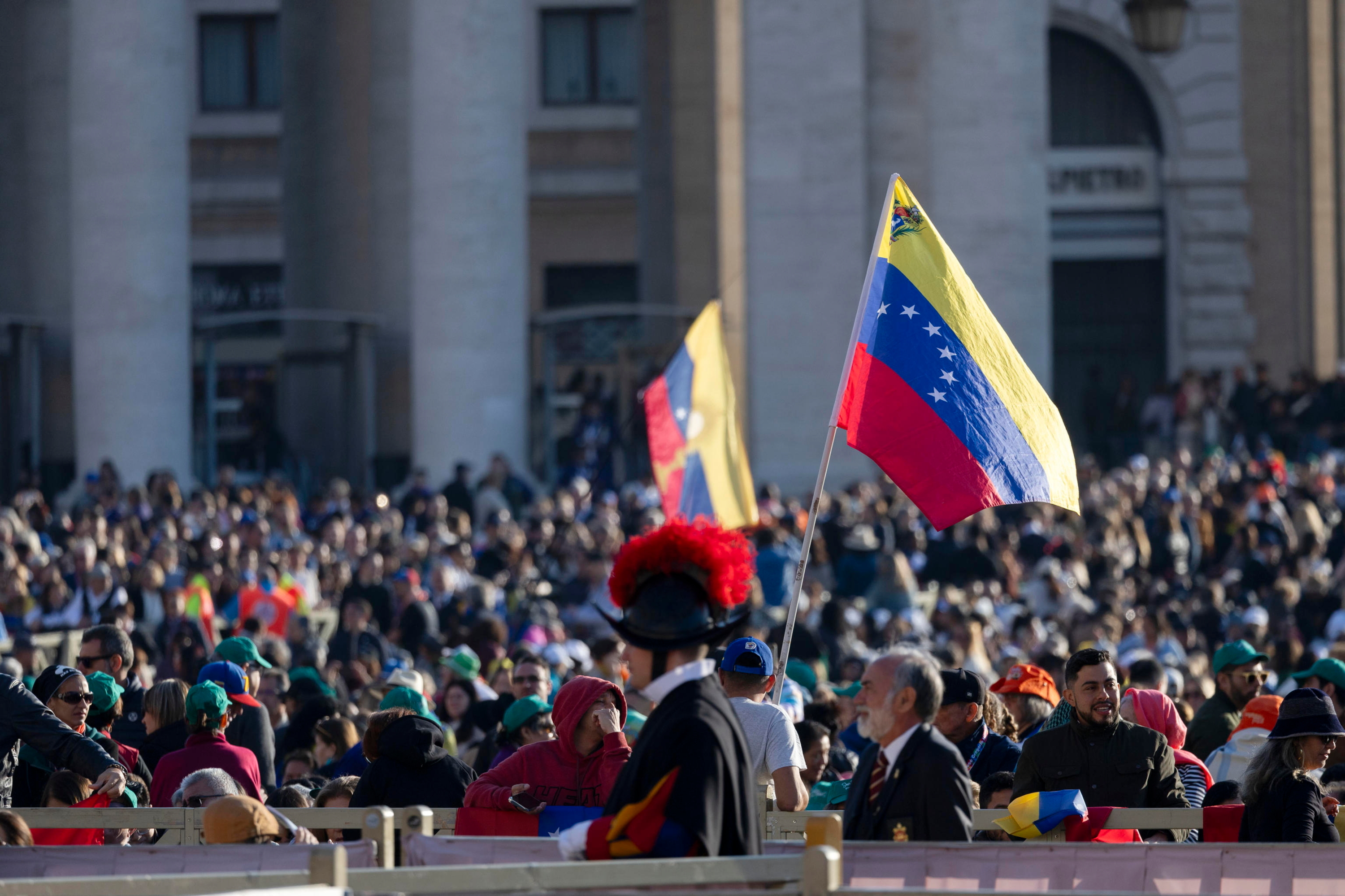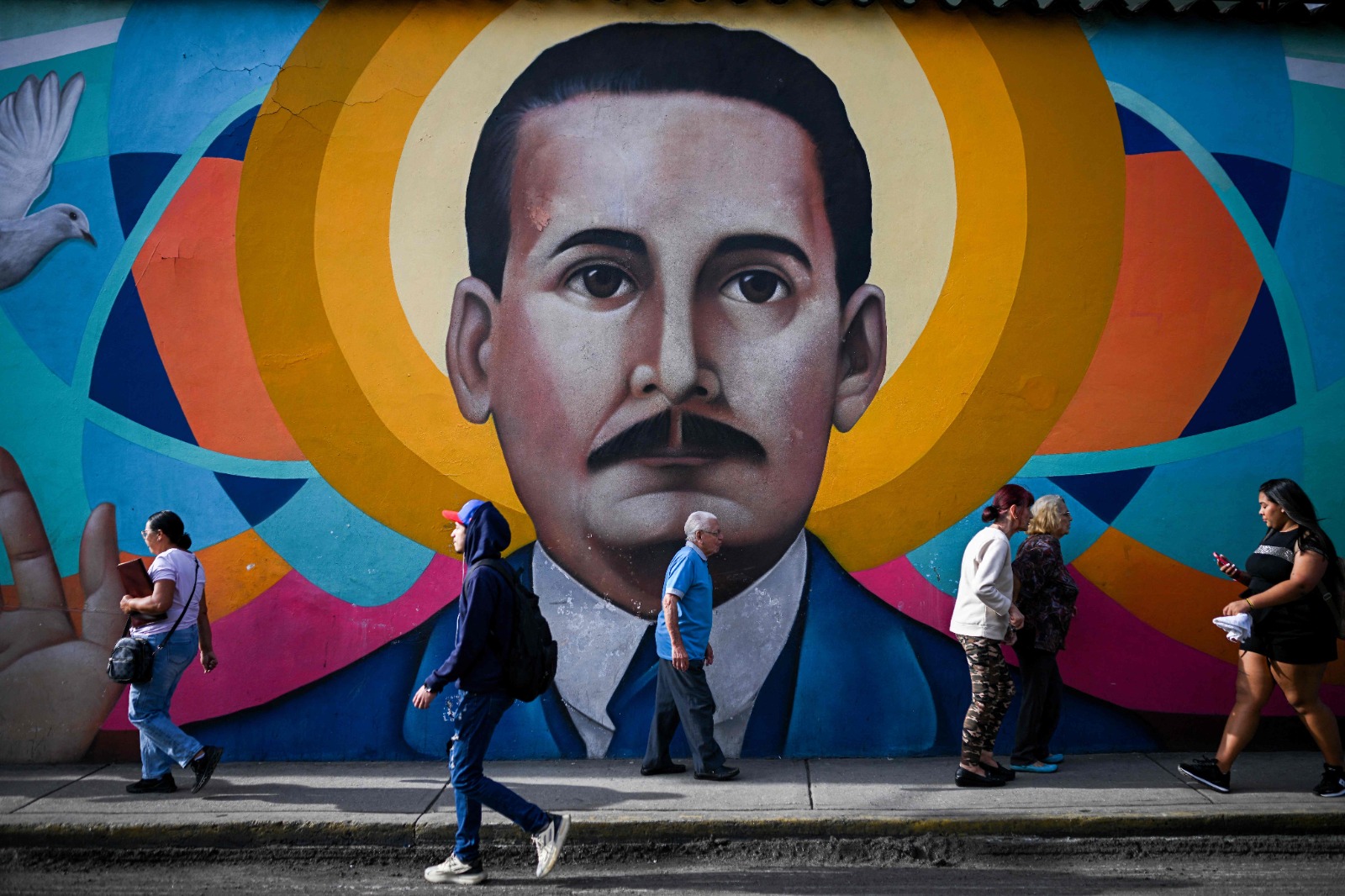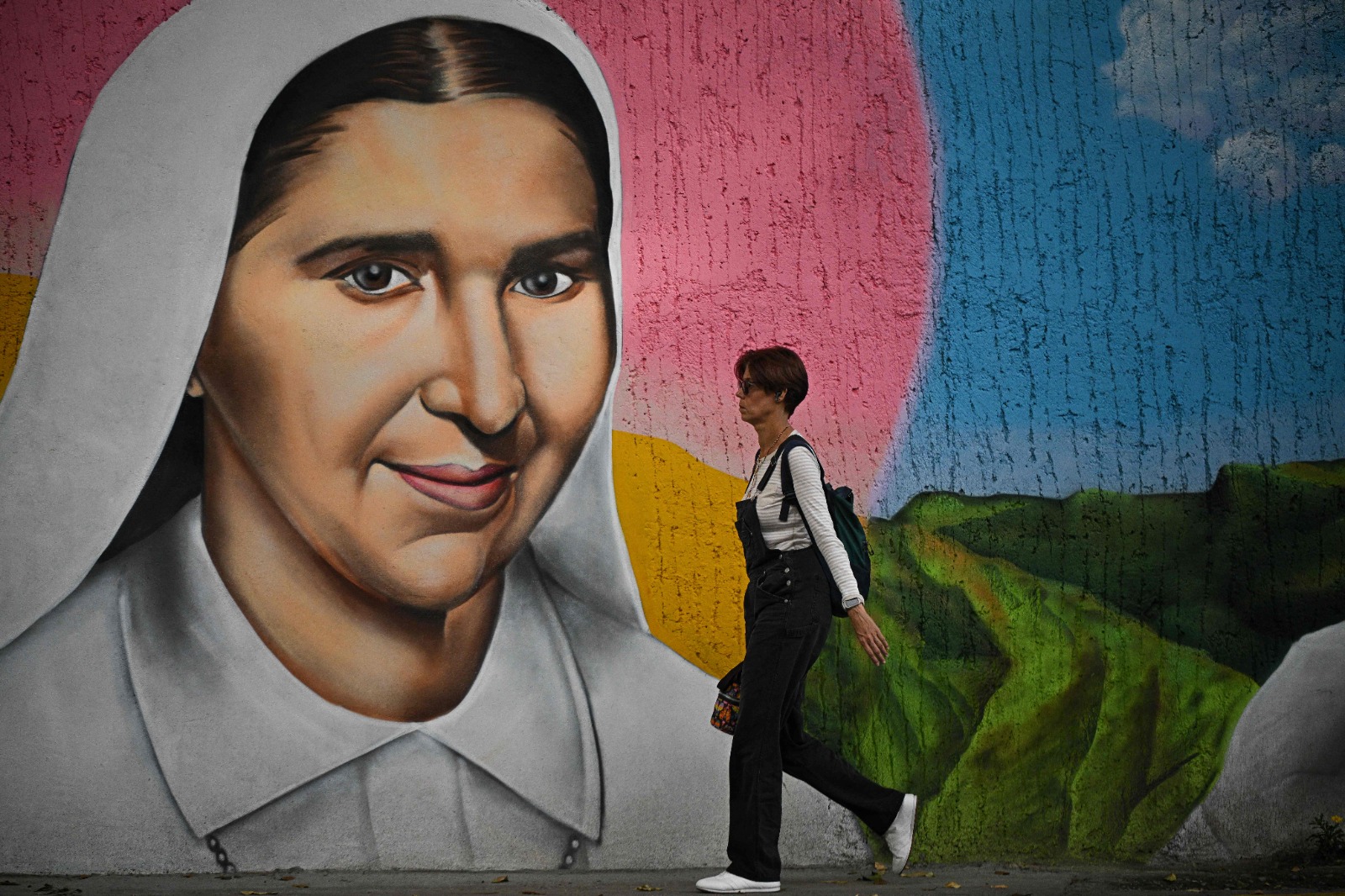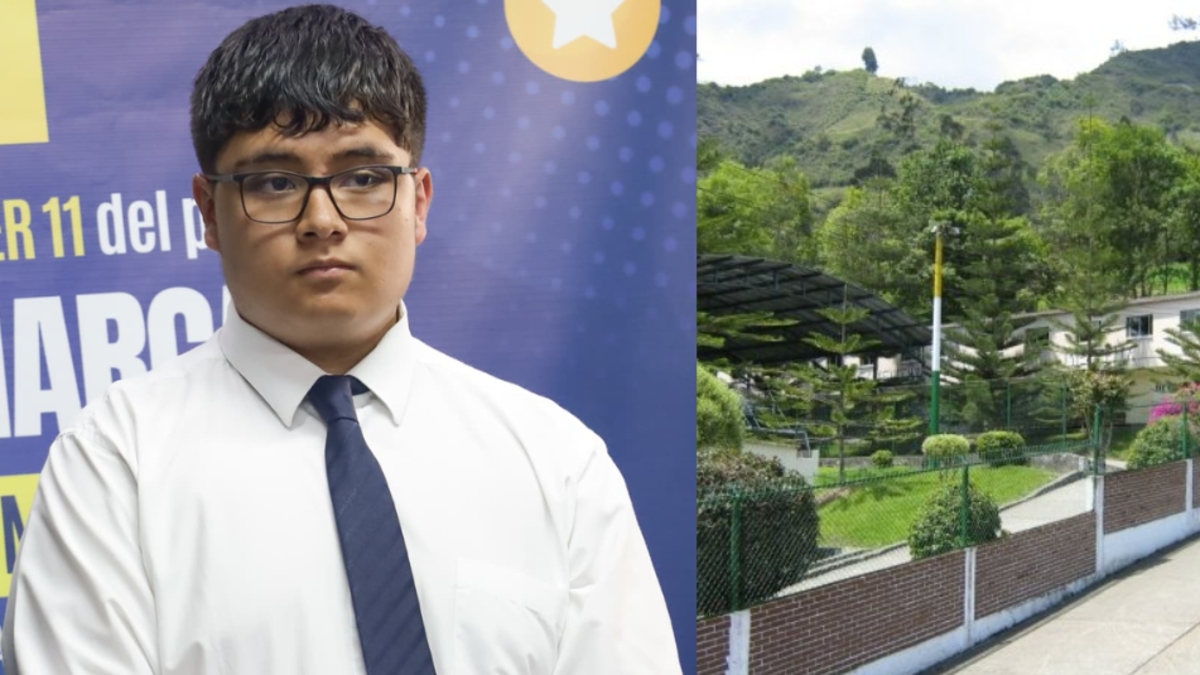Pope Leo XIV canonized José Gregorio Hernández and Carmen Rendiles, making them the first Venezuelan saints.

For the first time in Venezuela's history, two of its religious figures have reached the altars of the Catholic Church . Pope Leo XIV canonized José Gregorio Hernández and Carmen Rendiles this Sunday in St. Peter's Square during a multitudinous ceremony.
During the ceremony, as is traditional, the prefect of the Dicastery for the Causes of All Saints read the biographies of the two blesseds and requested that their names be inscribed in the Book of Saints. After the Latin formula of canonization was read by the Pope, loud applause was heard in St. Peter's Square.
Nearly 55,000 people gathered in the square for the canonization Mass, local authorities reported.
Among the attendees, the large number of Venezuelans stood out, notable for the large number of their national flags and T-shirts with images of the new saints.

Faithful with Venezuelan flags at the canonization ceremony at the Vatican. Photo: EFE
Saint José Gregorio Hernández, known as the "doctor of the poor," was born on October 26, 1864, in Isnotú, a small town in the western state of Trujillo, and was raised by a modest family with strong religious values.
In Venezuela, devotion to him has been professed for over a century, and his canonization has for years been one of the few points of unity between Chavistas and opponents amid political polarization.
During his lifetime, he was much loved for his dedication to the poor and his tireless work as a physician, and is remembered for his great charity and humility.

Mural of José Gregorio Hernández, the first Venezuelan saint. Photo: EFE
Hernández moved to Caracas at age 13 to continue his studies and graduated as a doctor from the Central University of Venezuela (UCV) in 1888.
He died on June 19, 1919, run over by one of the few vehicles circulating in Caracas.
He was beatified on April 30, 2021, after Pope Francis recognized the miraculous recovery of Yaxury Solórzano Ortega, a girl who was shot in the head and whom doctors had given up for lost.
Although the Vatican has only recognized this miracle, in Venezuela Hernández Cisneros is credited with "thousands" of favors, leading the local Church to begin the process of canonizing him in 1949, and he was declared a servant of God in 1972.
Santa Carmen Rendiles Santa Carmen Rendiles, for her part, was born on August 11, 1903, in Caracas, the third of nine siblings. From a young age, she displayed a deep religious vocation, which was rejected by several communities due to her disability, as she was missing almost her entire left arm.
In 1927, she joined the Congregation of the Servants of Jesus in the Blessed Sacrament, and in 1965, with the support of the Venezuelan episcopate, she achieved the congregation's independence and founded a new religious institute, of which she was the first superior general.

Carmen Rendiles, the first Venezuelan saint. Photo: AFP
Throughout her life, she dedicated herself to education, founding schools for low-income girls, and promoting important social projects, always committed to teaching catechism and serving those most in need.
In 1974, he suffered a traffic accident that left him with a fractured leg, and despite his physical limitations, he continued working using crutches and a wheelchair until he finally died on May 9, 1977.
The nun was beatified by Pope Francis on June 16, 2018, after a miracle attributed to her intercession in the healing of a Venezuelan doctor in July 2003 was approved, and in March 2021 the second miracle that allowed her canonization was approved: the "miraculous healing" of a woman in 2015.
Canonization of other saints Along with Hernández (1864-1919) and Rendiles (1903-1977), he also canonized Ignatius Choukrallah Maloyan, Armenian Catholic Archbishop of Mardin, Turkey; the layman from Papua New Guinea Peter To Rot; the Italian nuns Vincenza Maria Poloni, founder of the Institute of the Sisters of Mercy of Verona, and Maria Troncatti, of the Congregation of the Daughters of Mary Help of Christians; and the Italian layman Bartolo Longo.
eltiempo




